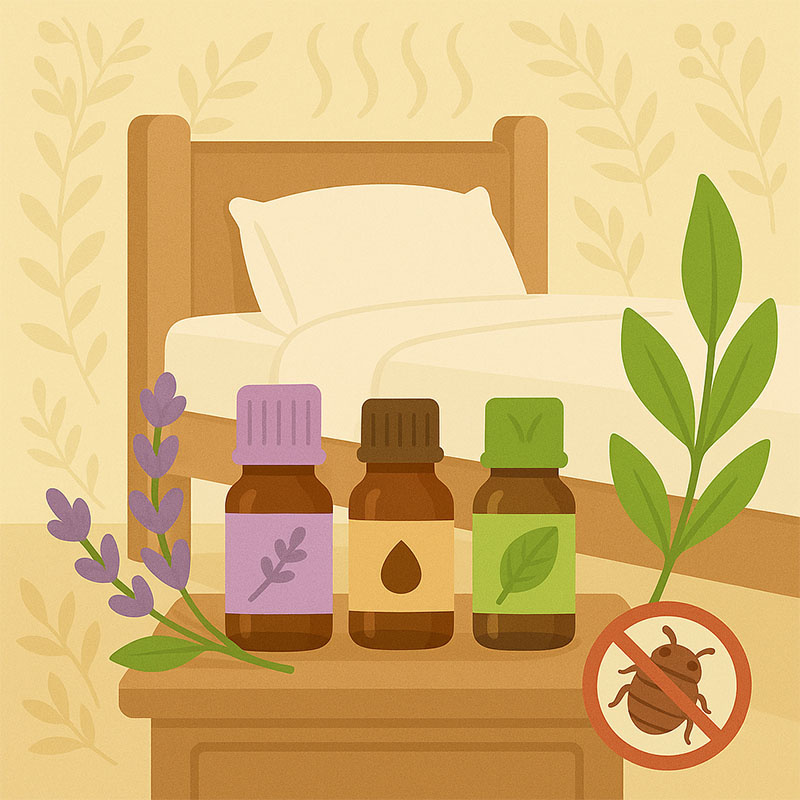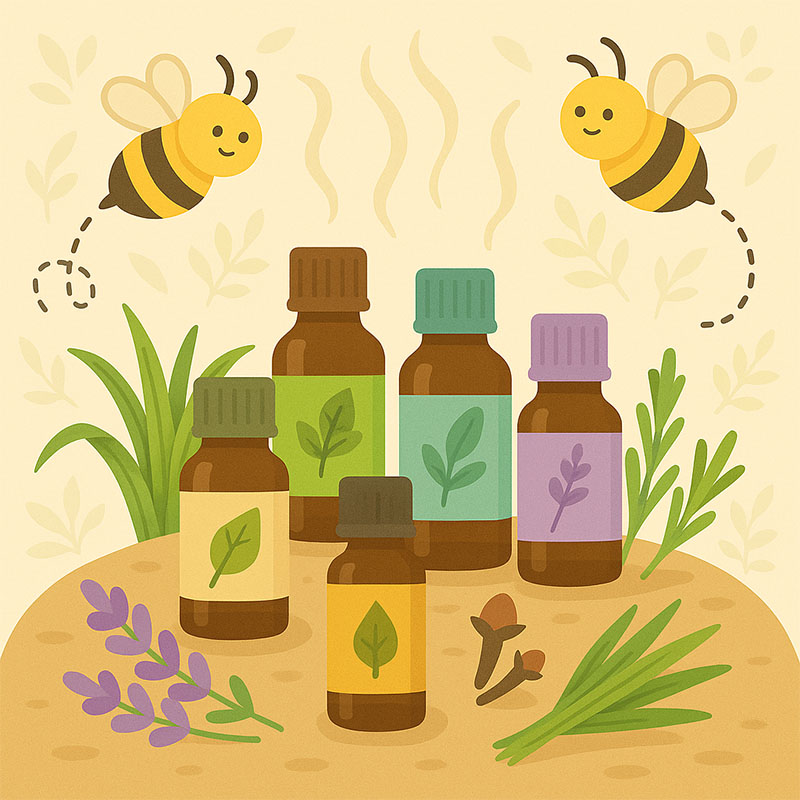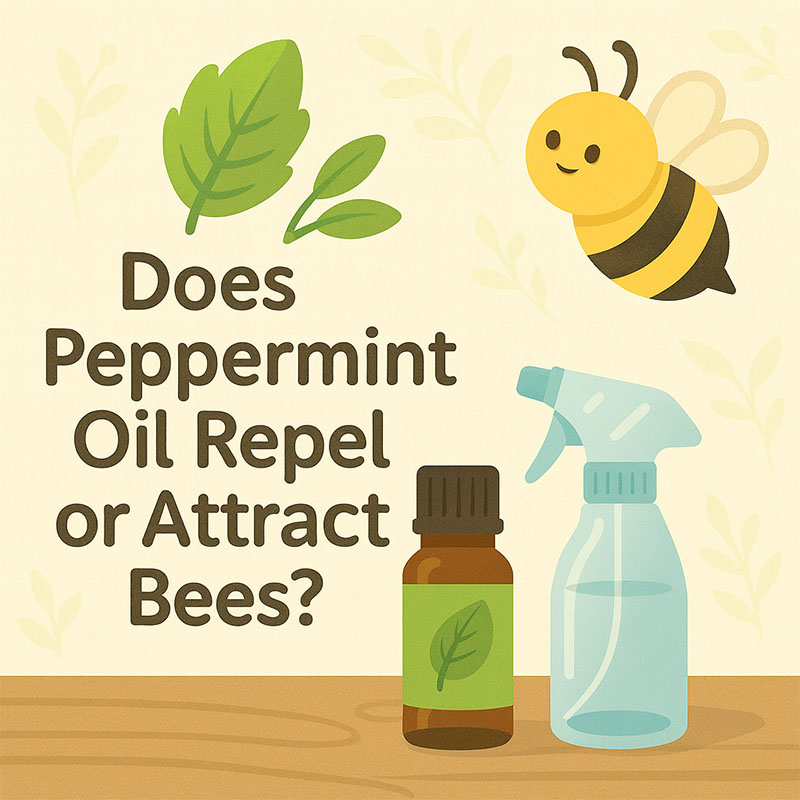When I first began digging into natural solutions for bed bugs, I kept coming across essential oils. People in forums and DIY guides shared recipes for sprays, while brands like Serenid even sell ready-made essential-oil sprays marketed for bed bugs.
That got me curious: how effective are these oils really, and what role do they play compared to professional treatments?
Here’s what I found out.
How Essential Oils Help Against Bed Bugs
Essential oils can:
- Repel bed bugs with strong scents that discourage them from nesting.
- Soothe bites thanks to anti-inflammatory properties in oils like lavender and rose geranium.
But they can’t eliminate infestations alone. Just like I noted in my guide on peppermint oil and bees, essential oils work best as part of a bigger plan, not a stand-alone fix.
The Essential Oils That Show Up Most
According to Serenid’s essential oil guide and other research, the following seven oils are most often recommended:
| Essential Oil | How It’s Used | Precautions |
|---|---|---|
| Lavender | 40 drops in 500 ml water spray | Gentle, safe for kids 3+ |
| Tea Tree | 20–30 drops in water spray | Strong antiseptic; avoid eyes |
| Clove | 30 drops in water, with lemon eucalyptus | Powerful, not safe for kids <6 |
| Lemongrass | 30 drops in spray, blends well with clove/tea tree | Don’t apply undiluted to skin |
| Rose Geranium | 30 drops in spray | May irritate fabrics |
| Peppermint | 25–30 drops in water + vinegar | Avoid use with kids <6 or pregnant women |
| Lemon Eucalyptus | 30 drops in water spray | Repellent + bite relief; always dilute |
These align with what I’ve already seen in other insect-related uses, like citrus oil sprays for carpenter bees. Different bug, same principle: strong natural aromas can discourage pests.
What Science Says
The most robust study I came across was from Purdue University, which tested specific essential oil compounds:
- Carvacrol (oregano, thyme)
- Thymol (thyme)
- Eugenol (clove)
- Citronellic acid (lemongrass)
- Linalool (basil)
- Camphor (camphor tree)
Findings:
- Thymol & carvacrol disrupted bed bug nervous systems.
- Linalool overstimulated them.
- Fumigant use (vapors) worked better than topical sprays.
So while essential oils can help, they don’t perform at the level of synthetic insecticides or professional heat treatments.
DIY Spray Recipes I Found
Here are some safe blends people commonly use (also shared by Serenid):
Lavender + Tea Tree Spray
- 500 ml water, 40 drops lavender, 10 drops tea tree
- Spray mattresses, sheets, curtains daily
Clove + Lemon Eucalyptus Spray
- 500 ml water, 30 drops clove, 10 drops lemon eucalyptus
- Spray seams, skirting boards, furniture edges twice daily
Peppermint Repellent Spray
- 500 ml water, 30 drops peppermint, 10 drops tea tree, 1 tbsp vinegar
- Spray carpets, baseboards, bed frames
⚠️ Always test fabrics first and avoid spraying near infants or those with asthma.
Commercial Essential-Oil Sprays I Found
DIY blends are one approach, but there are also pre-formulated sprays that combine essential oils with other active ingredients.
One example is Serenid’s bed bug sprays. Reviewers like the pleasant scent and easy application, but many noted the need for repeated spraying and additional treatments for heavier infestations.
Another option I came across is EcoRaider Bed Bug Killer. It’s non-toxic, EPA-registered, and lab-tested for effectiveness against bed bugs. What stood out in customer reviews was:
✅ Noticeable reduction in bed bug activity after a few uses
✅ Safer ingredients compared to synthetic sprays
✅ Residual protection that lasts longer than simple DIY oils
⚠️ The limitations were similar to Serenid—users still had to reapply regularly and, in more severe infestations, pair it with heat or professional treatments.
For me, the takeaway is that commercial sprays can save you the hassle of mixing your own formulas, but they’re still just one part of a larger integrated pest management plan like in my carpenter bee repellent guide. The theme is the same: essential oils help, but they don’t solve the root problem on their own.
What Oils Can’t Do Alone
Essential oils won’t:
- Kill hidden eggs inside mattresses or furniture.
- Eliminate infestations in walls or deep seams.
- Provide the residual protection that insecticides do.
They’re best as a complement, not the main event.
When It’s Time to Call the Pros
If bed bugs keep biting after DIY sprays, it may be time for professional help. Options include:
- Heat treatment – raising temps to 120°F+ kills all life stages.
- Residual insecticides – offer longer protection.
- Integrated Pest Management (IPM) – combining oils, heat, chemicals, and cleaning.
FAQs
Do essential oils kill bed bugs completely?
No—they can repel and reduce activity but not fully eliminate infestations.
Are they safe for kids and pets?
Some, like lavender, are safe when diluted. Strong oils like clove and peppermint require caution.
How often should sprays be used?
Daily for 7–10 days, then every 2–3 days for maintenance.
Are commercial sprays better?
Brands like Serenid are convenient and pre-measured, but even they require repeated use and work best as part of a bigger plan.
My Takeaway
Essential oils are great allies: lavender and tea tree can soothe bites, clove and lemongrass can repel bed bugs, and blends can make your room smell fresh. But they’re just one piece of the puzzle.
If you want natural support, start with DIY sprays—or try a commercial product like Serenid’s—and combine it with a bigger treatment plan. That’s how you move from temporary relief to real peace of mind.




